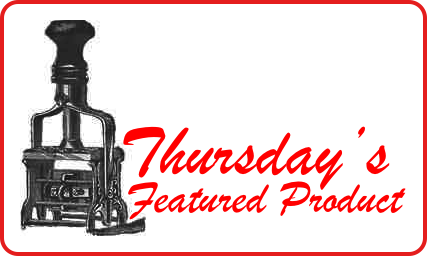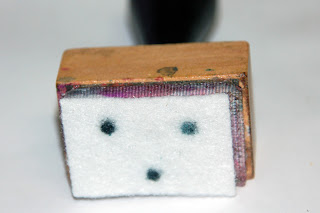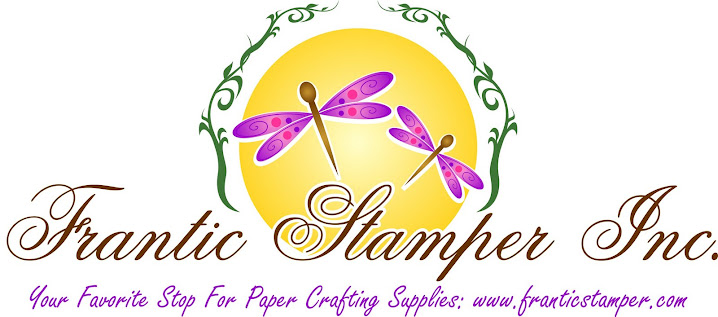
 by Sharon Jeffs
by Sharon Jeffs
Working with Alcohol Inks
One of the most versatile products on the market is Alcohol inks. You can buy them in pen form like the Copic markers or in bottle form such as the Adirondack ink range. There are so many ways to use them as well as a bountiful supply of surfaces to use them on.The Adirondack range is supported by Tim Holtz and features refillable pens for application, applicator tools with replaceable felt pads and over 40 different colours including metal mixatives to personalise your surface further.
Using an applicator
There are lots of different ways to use these inks but one of the quickest is with the use of an applicator with felt pads. Ranger, the same company who creates these inks also produce a great applicator that features a velco surface so you can replace your felt pads frequently.
To use a felt pad, place into squarely over the Velcro and gently push into the Velcro to hold it in place.

Add only a couple of drops of ink at a time to several different areas of the pad the dab down gently in a dabbing motion to colour.

You can also add two or three different coloured drops at a time if you want to get a dappled effect with varying shades.

Here is a list of some of the ways I have used these amazing inks –
Acetate backgrounds
Last year, I created a card tutorial featuring this technique with acetate. You can find the article here (http://franticstamper.blogspot.com/2010/03/hummingbird-friends-card.html). This card featured a panel of acetate which I applied alcohol ink to.
Colouring chipboard
Another great use for alcohol inks is to use them to add colour to chipboard shapes and words. You need to begin with a good coat of paint on the surface of the chipboard before you begin, this seals the surface so that the alcohol inks can be blended and don’t just soak into the chipboard.Here I have an actual piece of wood that has been scroll cut to form a word. I painted an undercoat of white gesso over its surface and left it to dry before inking it up with Cranberry, Raisin, Shell Pink and Silver Mixative.

Embossed metals
One of the things that drew me to Scrapbooking and cardmaking was the ability to use everyday items to create a piece of art. Metal surfaces such as the seal on the inside of a Milo tin or even the sides from an aluminium soft drink can; can all be cut or even run through a die cut machine to create new items for decorating your home.
You can dab alcohol ink directly onto metal surface or for something a bit extra, try embossing the metal first.

Another alternative is to dry brush a layer of gesso over the embossing, leave it to dry then buff off the paint on the raised paert of the pattern. Finally, dab the alcohol inks over the surface of both the paint and the metal.

To create this card, I used a piece of the metal lining from a Milo tin (I usually have a lot of this because of my children’s addiction to Milo)and embossed it before adding a layer of paint and alcohol inks to create this different effect.
Marbling
One of my favourite activities from my childhood art lessons is Marbling. I love the soft feel that inks immersed in water produce. Alcohol inks are perfect for this because the alcohol component reacts with the water’s surface tension in unpredictable ways that can give you some amazing effects.
Begin with a flat container of water that is wider than the product you will be marbling. Drop ink onto the surface of the water.

Once you have added ink and achieved a look you like, place the paper/card flat onto the surface of the water. Leave for a couple of seconds then pull up lay flat to dry. The inks will continue to react with the water as it is drying.

I used Stonewash, Denim, Cloudy blue and the silver and the Copper Mixatives on white glossy card to create my example.
Glass and Plastic
I think the best part of using alcohol inks is probably that they are so translucent. I can use them on a surface that is clear and gain a colour without losing that transparency. This is particularly handy when you want to paint onto clear surfaces or if the object being painted is something you would like to see the sun glisten through.
Here I coloured the faceted clear bead with alcohol inks before threading them all together to create my suncatcher. I used the colours … Denim, Cranberry and Citrus with a Silver Mixative. The best part of this project was that it didn’t matter if the colours of the beads where slightly different because the alcohol inks blended them all together.

For this photo stand I wanted the colour to be a lot simpler since I was also adding flowers. I used … Citrus, Bottle, pesto and a little of the Silver Mixative (on the tips of the pale pink flowers and the fern leaves).


No comments:
Post a Comment